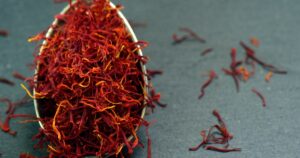The History of Sumac: From Ancient Civilisations to Modern Kitchens
Sumac’s story begins in the cradle of civilization, the Middle East, where it has been a staple ingredient for millennia. Historical records and culinary manuscripts reveal that sumac was a prominent spice in the Mediterranean and Middle Eastern cuisines, used not only for its flavour but also for its health benefits and as a preservative. Ancient Egyptians used it in the mummification process, while Romans valued sumac for its sourness, often using it as a vinegar substitute. Its journey through time showcases a spice revered across empires and civilizations, each finding unique applications that highlighted its versatility and appeal.
The Global Journey of Sumac: Trade Routes and Cultural Exchange
The global journey of sumac from regional spice to worldwide culinary ingredient is a fascinating tale of trade routes, cultural exchange, and gastronomic innovation. Through the Silk Road and other ancient trade networks, sumac found its way into the spice cabinets and markets of Europe, Asia, and eventually, the New World. This journey was not just about the physical movement of goods, but also about the exchange of ideas, culinary techniques, and cultural practices, with sumac serving as a vibrant ambassador of its native cultures. Today, the presence of sumac in global cuisine is a testament to the interconnectedness of our world and the shared human quest for flavour and diversity.
Sumac in Cultural Ceremonies and Traditions
The significance of sumac extends beyond the kitchen and into the realm of cultural ceremonies and traditions. In some cultures, sumac has been part of rituals and celebrations, symbolizing life, fertility, and prosperity. For instance, in certain Middle Eastern weddings, sumac, along with other spices, is used to adorn tables, representing the bringing together of diverse flavours of life. Such traditions highlight the deeper, symbolic meanings attributed to sumac, further elevating its status from a mere spice to a bearer of cultural identity and heritage.
Culinary Uses of Sumac: A Tangy Twist to Dishes Worldwide
In contemporary cuisine, sumac’s role is as dynamic as its history. Known for its sour, lemony taste with a hint of vinegar, sumac is a beloved seasoning in salads, marinades, and meat dishes. It is a cornerstone of the Middle Eastern culinary tradition, where it graces the iconic fattoush salad, adds depth to kebabs, and enhances the flavour of hummus and other dips. Beyond its traditional realms, chefs and home cooks around the world are now embracing sumac, using it to impart a unique tanginess to everything from roasted vegetables to seafood dishes. Its versatility in both savoury and sweet contexts underscores sumac’s enduring appeal and adaptability.
Sumac Tips and Tricks for the Modern Kitchen
Embracing sumac in the modern kitchen involves understanding its unique properties and knowing how to harness its potential to elevate dishes. One key aspect is the timing of its addition:
- Sprinkling sumac towards the end of cooking or as a finishing touch preserves its vibrant colour and tangy flavour.
- Experimentation is also encouraged; sumac’s citrusy profile can add an unexpected twist to desserts, like adding a pinch to berry compotes or citrus-based cakes, introducing a layer of complexity that tantalises the palate.
- For those looking to explore the spice’s potential, starting with traditional recipes can provide a foundation upon which to build and innovate, here are some traditional recipes:
- Fattoush Salad: This Levantine salad is a colourful and refreshing mix of chopped vegetables like tomatoes, cucumbers, and radishes, enhanced with crispy pieces of toasted or fried pita bread. Sumac is sprinkled generously over the salad, giving it a distinctive tangy flavour that complements the freshness of the ingredients. It’s often dressed with olive oil, lemon juice, and garlic.
- Za’atar Seasoning Blend: Za’atar is a versatile Middle Eastern blend of herbs and spices where sumac is a key ingredient, alongside dried thyme, oregano, marjoram, toasted sesame seeds, and salt. This blend can be used on meats, vegetables, or sprinkled over flatbreads before baking. It’s known for its tangy, nutty, and slightly woody flavours.
- Sumac-Spiced Kebabs: In various Middle Eastern countries, sumac is used to marinate chunks of lamb, beef, or chicken before they are threaded onto skewers and grilled or roasted. The sumac not only adds a vibrant colour and tart flavour to the meat but also tenderises it, resulting in kebabs that are juicy and full of flavour.
- Sumac Lemonade: Known as “Sumac-ade” or “Sumac Lemonade,” this refreshing drink is made by soaking sumac berries in water for a few hours to extract their tangy flavour, then straining the liquid and sweetening it with sugar or honey to taste. It’s a popular beverage in parts of the Middle East, especially during the hot summer months, and offers a unique twist on traditional lemonade.
Conclusion
As we explore the vivid world of sumac, it becomes clear that this spice is more than a mere ingredient; it is a cultural artifact, a culinary bridge connecting past and future. Its journey from ancient times to the present day reflects the enduring legacy of sumac, not just as a component of regional cuisines but as a global treasure that continues to inspire and influence culinary practices worldwide. The modern renaissance of sumac in kitchens across the globe is a testament to its timeless charm and the ever-evolving nature of culinary artistry.
𐡸 𐡸 𐡸 𐡸 𐫱 𐡷 𐡷 𐡷 𐡷
Frequently asked questions
Absolutely! Sumac’s versatility makes it an excellent addition to vegan and vegetarian cuisine, adding a burst of flavour to plant-based dishes without the need for animal products.
While sumac is generally safe for most people, it is important to distinguish it from poison sumac, which is toxic and not related to the culinary sumac. Always ensure you are using the edible variety.
Sumac should be stored in a cool, dark place in an airtight container. Proper storage helps preserve its vibrant colour and tangy flavour.
Yes, sumac can serve as a substitute for lemon juice or vinegar in many recipes, providing a similar tangy flavour profile. It’s particularly useful in dry rubs and seasoning blends.



